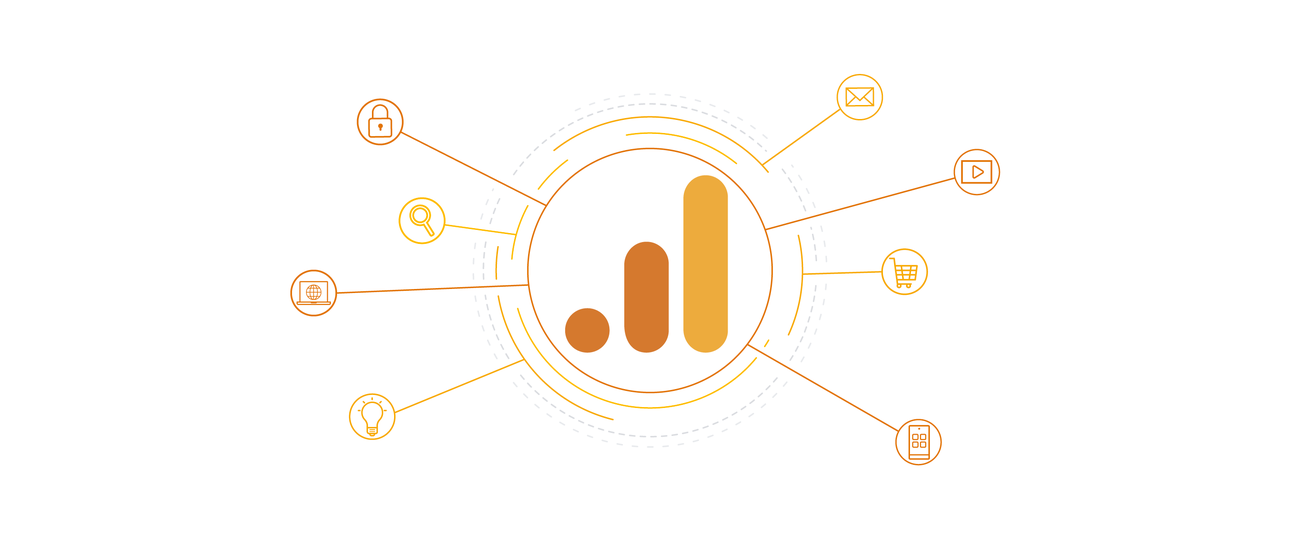A Complete Guide to Comprehending When Does the Google Analytics Tracking Code Send an Event Hit to Analytics
A Complete Guide to Comprehending When Does the Google Analytics Tracking Code Send an Event Hit to Analytics
Blog Article
Enhance Your Search Engine Optimization Approach With Effective Google Analytics Monitoring Code
Including Google Analytics tracking code into your SEO strategy is a critical action toward achieving measurable results. What particular approaches can you take on to take full advantage of the effect of this information on your Search engine optimization efforts?

Comprehending Google Analytics Basics
To successfully take advantage of Google Analytics for Search Engine Optimization, it is necessary to grasp its foundational ideas. Google Analytics functions as an effective tool for tracking and examining web site traffic, supplying understandings that are critical for maximizing online search engine efficiency. At its core, the system allows individuals to check user actions, web traffic resources, and vital performance indications (KPIs) such as bounce rates and session durations.
Familiarity with the customer interface is vital. Secret areas consist of the Target market, Purchase, and Behavior tabs, each offering useful data. The Target market section offers demographic understandings, aiding to customize web content to target customers properly. The Acquisition tab exposes how site visitors reach the website, whether through organic search, paid ads, or social media, directing critical changes in advertising initiatives.
Comprehending metrics such as natural web traffic volumes and conversion prices is vital for assessing SEO performance. Ultimately, understanding these fundamentals enables digital marketing experts to harness the full capacity of Google Analytics, driving notified decisions that boost total SEO strategies. By developing a strong structure, companies can efficiently examine their efficiency and recognize opportunities for improvement in their on the internet visibility.
Establishing Tracking Code
Appropriately establishing up the tracking code is essential for accurate information collection in Google Analytics. The very first step entails developing a Google Analytics account and residential property, where you will obtain an one-of-a-kind tracking ID. This ID is essential for connecting your internet site's information to your Google Analytics account.
Once you have your monitoring ID, incorporate the tracking code snippet into your site's HTML. This is normally put in the header section of each web page to ensure it tons early in the web page providing process. If you're utilizing a Content Management System (CMS) like WordPress, many plugins streamline this process, allowing you to include the tracking code without direct HTML editing.
After carrying out the tracking code, it is crucial to check its performance. You can make use of the Google Tag Aide device to validate if the monitoring code is properly installed and operating. Additionally, keep an eye on the real-time reporting function in Google Analytics to validate that data is being accumulated correctly.
Making certain that the monitoring code is effectively set up lays the foundation for effective data evaluation, allowing you to make informed decisions to improve your search engine optimization technique and overall internet site performance.
Key Metrics to Screen
Determining essential metrics to keep an eye on is crucial for comprehending the effectiveness of your SEO approach through Google Analytics. By concentrating on particular information points, you can assess the effect of your optimization efforts and make notified decisions to improve performance.
One of the primary metrics to track is natural website traffic, which indicates the number of site visitors coming to your site via search engines. This metric shows the overall wellness of your SEO strategy. Next, monitor the bounce rate, which reveals the portion of site visitors that leave your website after seeing just one web page. A high bounce price might signal that your content is not fulfilling individual expectations or that your touchdown web pages require improvement.
Key phrase positions are also essential; monitoring modifications in keyword settings assists examine the performance of your targeted SEO initiatives. By very closely following these vital metrics, you can gain beneficial insights into your Search engine optimization strategy's efficiency and identify locations for enhancement.
Analyzing Individual Actions
Comprehending customer behavior is important for refining your SEO technique and making best use of website performance. Google Analytics gives a wide range of information on user engagement metrics, such as bounce rates, time on website, and page sights per session.
In addition, tracking customer circulation can expose usual navigating paths, highlighting potential traffic jams or areas for improvement. Understanding the demographics, interests, and geographic places of your site visitors allows for even more tailored web content that talks to their demands. Making use of segmentation features in Google Analytics better enhances your capability to analyze user behavior by enabling you to compare different audience teams.
Moreover, monitoring conversion rates and user activities can provide insights right into the performance of your phone calls to action and overall website design. This all natural sight of individual habits is essential for making educated choices that boost individual experience and drive higher engagement, ultimately adding to improved search engine optimization performance.
Leveraging Insights for Search Engine Optimization
Continually leveraging understandings gained from user behavior analysis can considerably enhance your search engine optimization efforts. By using Google Analytics, you can determine key metrics such as bounce rates, session period, and user flow, which reveal just how visitors communicate with your web content. These insights enable you to determine areas requiring improvement, such as high exit web pages or underperforming keyword phrases.

In navigate to this website addition, tracking natural website traffic sources gives quality on which channels are most effective, permitting you to assign resources purposefully (when does the google analytics tracking code send an event hit to analytics?). By evaluating conversion next page rates together with website traffic information, you can identify which web pages drive actual company results, refining your SEO technique further
Including these insights into your material method not just improves exposure yet likewise promotes a more user-centric method. Inevitably, a data-driven SEO method informed by analytics not only improves rankings but additionally aligns your goals with individual assumptions, bring about continual growth and engagement.
Final Thought
Efficient application of Google Analytics tracking code dramatically improves a SEO strategy by offering critical insights into customer habits and traffic sources. Ultimately, leveraging these insights contributes to refining SEO efforts, driving even more relevant web traffic, and boosting total internet site efficiency.
Integrating Google Analytics tracking code right into your Search engine optimization approach is a critical step toward attaining quantifiable results. At its core, the platform makes it possible for customers to keep track of customer habits, web traffic sources, and vital performance indicators (KPIs) such as bounce rates and session durations.
Recognizing user behavior is essential for refining your SEO method and optimizing site efficiency.Consistently leveraging understandings acquired from user actions analysis can substantially boost your Search engine optimization efforts.Effective application of Google Analytics tracking this page code dramatically enhances a SEO approach by giving essential insights into individual habits and web traffic sources.
Report this page